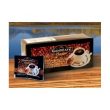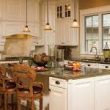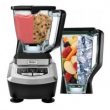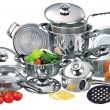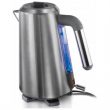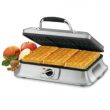Did you know the Swiss army knife was actually engineered for Swiss soldiers? It’s true. In 1884, Karl Elsener specifically opened a cutlery shop to design a knife that would meet the needs of a 19th century soldier. Obviously Elsener knew what he was doing because, here we are 130 years later, and the multi-functional device is still valued by people from all walks of life, all around the world.
Today, Elsener’s company is called Victorinox, a name he crafted to honor his mother, Victoria, and to include “inox,” a French abbreviation for “inoxydable,” which means rust-resistant. He chose this suffix because that’s the key characteristic that distinguishes not only the utility knife from other similar models, but a slew of cutlery devices, including kitchen knives.
Finely Finessed
In order for Victorinox knives to be appropriately used in the kitchen, developers realized the blade needed to be forged out of a material with certain properties. For example, the material couldn’t be too quick to rust, but at the same time, it needed to be strong, retain a sharp cutting edge and resist odors or stains.
Of course, stainless steel seems like a natural choice; however, not all stainless steel is made alike. The challenge for Victorinox developers was to find the right version that met each of these standards. A stainless steel with a high carbon content will be harder and able to maintain a sharp edge for longer periods; however, that large carbon presence makes the steel more susceptible to rusting. Conversely, if steel is formulated with less carbon to prevent rust, it has a more difficult time holding onto a sharp edge. And chrome-nickel steel is known to actually bend or become blunt even though it’s great at rebuking rust and damage from high-acid foods.
At Victorinox, each batch of steel slated for manufacturing kitchen blades is carefully analyzed to determine to what degree it should be heated so that the end results have just the right amount of carbon to produce knives that are hard and rust-resistant. After years of testing, Victorinox experts determined this ideal combination can be accomplished between 320° and 482° Fahrenheit. According to the company website, it “guarantees the best-edge retaining capacity while preserving a sufficiently high rust-resistance.”
It must work because Victorinox sells approximately 7 million kitchen cutlery products every year.
Victorinox 7-Piece Fibrox Handle Cutlery Set with Black Canvas Knife RollIn addition to carefully testing the carbon content of the stainless steel blades, these knives endure an ice-tempering process to promote sustained sharpness. The patented and National Sanitary Foundation-approved Fibrox handles ensure greater safety thanks to their slip-resistant grip when wet. They’re also ergonomically designed to create less tension on the wrist. The set should meet almost all your cutting needs with a 3-1/4-inch paring; 5-inch curved boning; 8-inch bread; 10-inch meat slicer; and 10-inch chef’s knives. Although engineered to stay sharp for longer than most cutlery, the set includes a honing steel to keep the knives in tip-top shape.
$158.98

